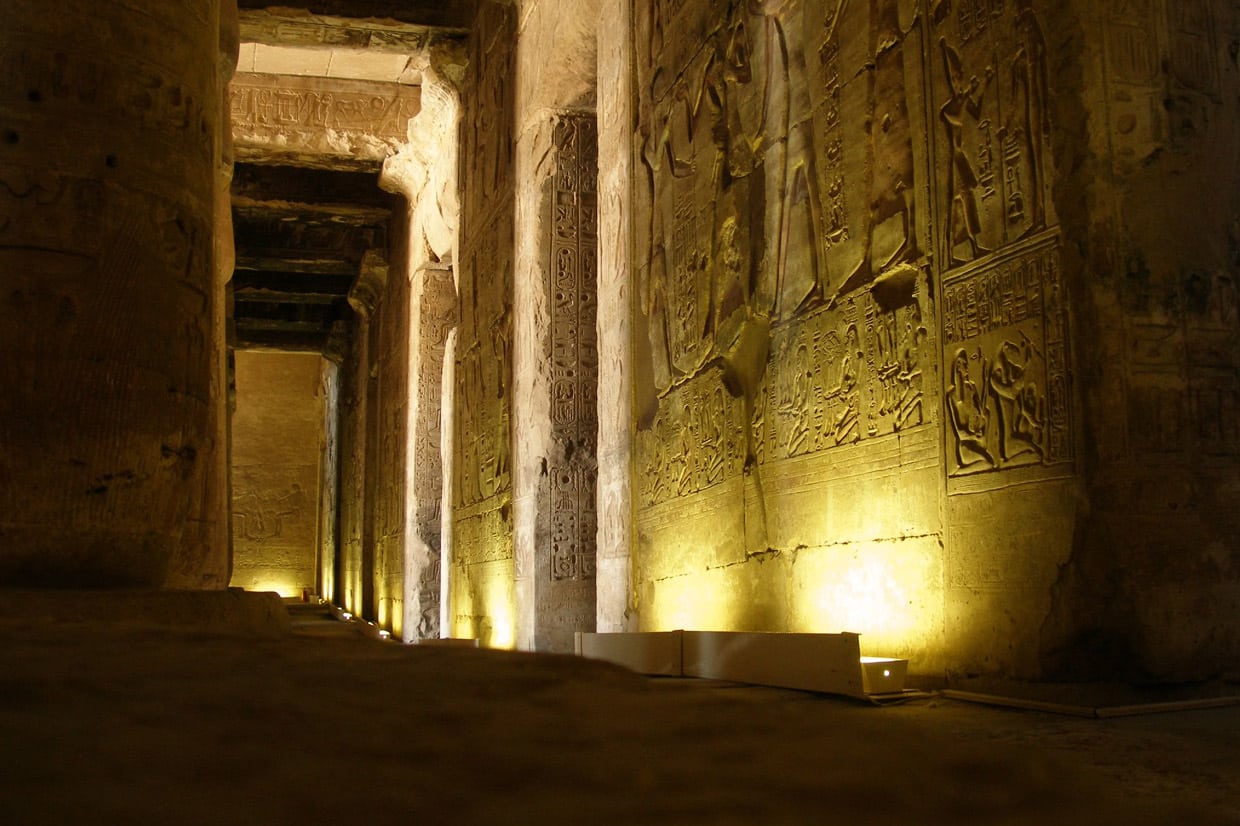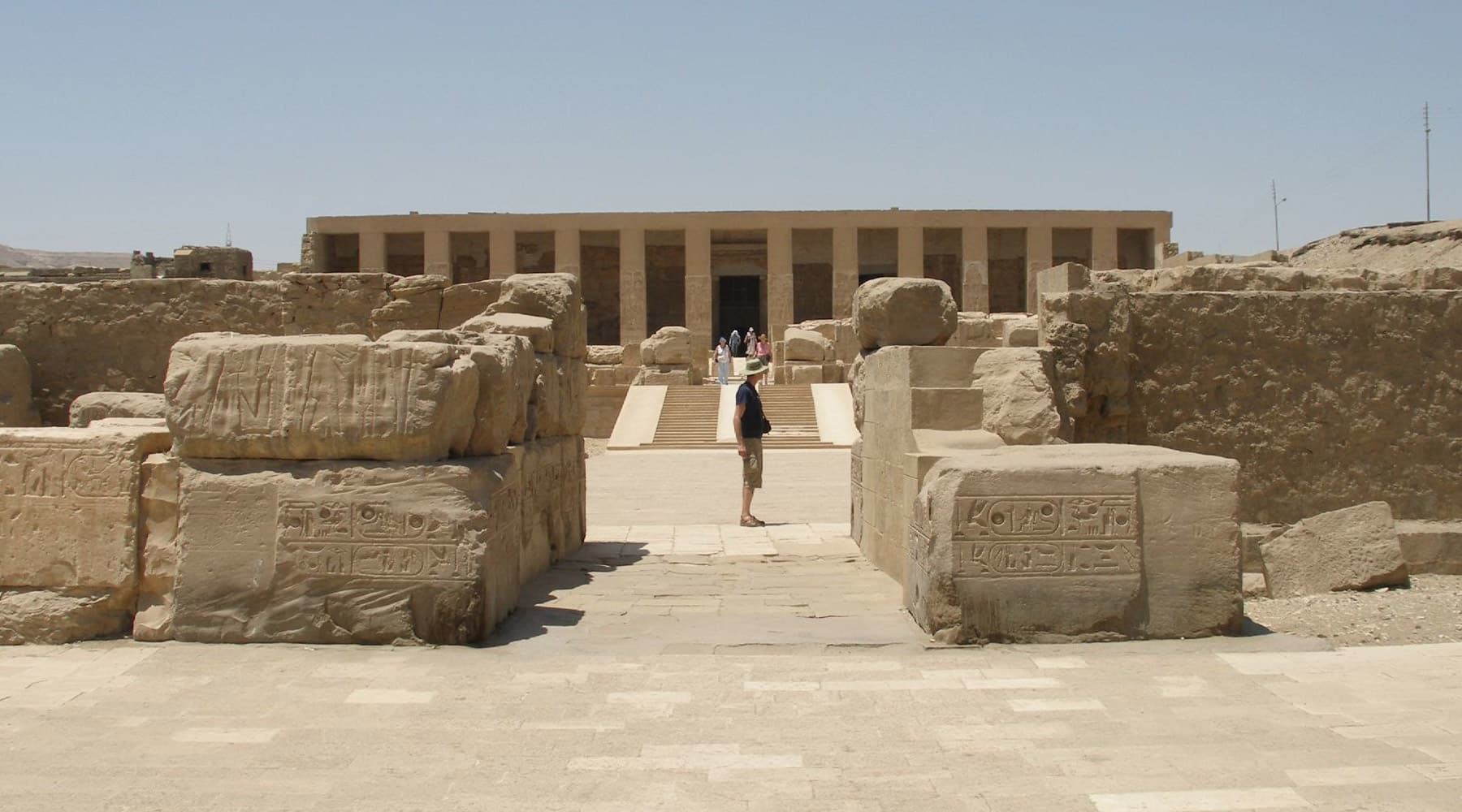Abydos has one of the most important historical sites called the Temple of Seti I or the Great Temple of Abydos, Egypt. Behind the temple, the Osireion can be found. By visiting the Osireion, you can see the elegance and art of the spirit of Pharaoh and how beautifully he built that. Throughout the temple, keep your eyes as sharp as possible to not miss a glimpse of Abydos graffiti, ancient Phoenician graffiti, Abydos graffiti, and ancient Phoenician graffiti. Temple of Seti I: Not only is it one of the most well-preserved holy districts anywhere in the world, but it is also remembered for its amazing stories about Pharaoh Seti I. (Photo by Vyacheslav Argenberg via Flickr)
Learning More About Pharaoh
A significant royal tomb such as Seti I’s illustrates his dignity during his supremacy. A descendant of Ramses I, Seti lived as the second Pharaoh of the 19th reign. But, according to some Egyptologists, he was the most powerful Pharaoh of the New Kingdom.
He was born the son of Ramses I and Queen Sitre, and he followed his father’s example to become a warrior man. He held numerous titles, including troop commander, vizier, and head archer that earned him high honor in Egyptian society. Many campaigns were waged under his father’s rule and within his dynasty.
Is the Temple a Good Example of Ancient Architecture?
There are two open-air courtyards, which were built by Seti I’s son, Ramesses II.
When you visit, your eyes will be fascinated by the two courtyards located in the open_air. The fact that Seti built them makes them even more charming. Both pharaohs and Osiris are depicted in numerous reliefs that depict them making sacrifices to gods or worshiping Osiris. Also located here are the statues of Seti I, Ramesses II, and many other pharaohs who ruled before them.
Learning More About The temple of Seti I
As you noticed earlier, this temple is made of limestone and has a very ancient view that is built on three levels. You will find no occasional than seven noses dedicated to several deities at the inner temple, including Osiris, Isis, Horus, Ptah, Re-Harakhte, Amun, and deified Pharaoh Seti I.
The front of the temple is covered by seven other independent temples, the doorways of which we mentioned before. But, contrary to the usual architecture of ancient chapels, this temple has mapped the chambers behind the church in a unique rather than regular arrangement. And by standing side by side, they have established a wonderful artistic image.

First Courtyard
As you may know, Ramses II added many wars and victories to history during his reign. Fans are lucky enough to see scenes of them on the southeast walls of the First Courtyard, which are relatively dilapidated. To reach the First Courtyard, from the northeast, enter the humongous temple complex.
Second Courtyard
Find the most important offering that the Second Courtyard has prepared for you on the wall to the left of the main gate. In this important inscription carved into 95 vertical columns, Ramses II records the execution of the temple. In the Second Courtyard, you can detect Ramses II in the presence of each god in relief. You will notice an image of Maat being presented to Osiris, Isis, and Seti I in the spectacle adjacent to the doorway. This courtyard is full of special inscriptions of Ramses II, and their splendor prompts you to constantly turn your head left and right to enjoy watching them. The best way to go to the second yard is to go through the first yard.
First Hypostyle Hall
The vast First Hypostyle Hall owes much of its beauty and value to the twenty-four columns on which it is built, the papyrus cluster columns with the heads of the bud columns gathered in a unique arrangement. Those which run between the temples are flanked by two pairs of columns, while those which lead to the outermost passageway are enclosed by the walls of the hall on one side. The way to reach the enchanting hall is through the central gate.

Second Hypostyle Hall
In this hall, you will encounter the beauty that many columns have created. These thirty-six strong pillars are the relatively ruined roof of the hall. The first twenty-four columns are decorated with capital letters of papyrus. The other pillars support the amazing boulders; it is incredible that these tree trunk columns have created such splendor.
Among the most important achievements of Egyptian sculpture can be found here in the Second Hypostyle Hall, some reliefs dating from the reign of Seti I. Into the Second Hypostyle Hall can be accessed from seven doors corresponding to the walled-up entrances.
Sanctuaries
You can visit the seven Sanctuaries right next to the Hypostyle Hall, along with the seven entrances. Amun (the most important god of the New Kingdom.) is the one in the middle. Horus, Osiris, and Isis can be seen on the right. The three deities on the left to Pharaoh Seti I, Harakhty, and the pharaohs on the right to Re-Harakhty and Ptah.
At this time of your trip, you should never be distracted, and be sure to look carefully at the ceilings and particular walls. This is how you can hunt down sacred relics of images of gods or stars and the names of the Seti I on the roofs.
The best-preserved reliefs in Seti I’s Sanctuary can be found on the wall on the left. Picturing the three falcon-headed and three dog-headed gods carrying the Pharaoh into the temple on the lower row has given a lot of glory to this chronological essence. The reliefs are reminiscent of Pharaoh’s banquets for you. Additionally, the reliefs inside the Sanctuary of Amun were preserved for their lucid colors.
Temple South Wing
An amazing experience on this long corridor niche is the presence of the Gallery of Kings and the famous Abydos Pharaoh List, which contains very exciting information about the Egyptian rulers. The reward for those who have remained so far is a glimpse of the first Egyptian Pharaoh to Seti.
It’s Ancient Egypt’s Most Important Necropolis, Abydos
The most influential ancient feature of Abydos is its significant function as the burial place of Pharaoh and the outstanding court panjandrum. This place has witnessed the burial of the dead king and has also been a decent host for the celebration of the annexation of his reign.
No greater bliss could an Egyptian experience than to be buried beside the Tomb of Osiris. Or, in the event of this failure, the mummy temporarily brought to Abydos where it can receive the required devotions, or at least set up a cenotaph for the honor of Osiris, lord of the Underworld, by erecting a monument stone.
Death and rebirth were visible in the ancient mystery performances at Abydos, which were performed annually in respect of the god Osiris. During the New Kingdom, Ptah, Re-Harakhty, and Amun adored her, along with Osiris’ sister and wife Isis, as well as their son Horus.
How to Get Here
Taking a Private Taxi
Abydos Temple Complex excursions can easily be arranged from Luxor. Traveling this way allows you to plan your itinerary, which is beneficial for exploring attractions outside of Luxor.
Taking a Tour Bus
A coach trip to Abydos is offered by most hotels and travel branches in Luxor. Keep in mind that traveling this way, you’ll probably find yourself in a large group.































